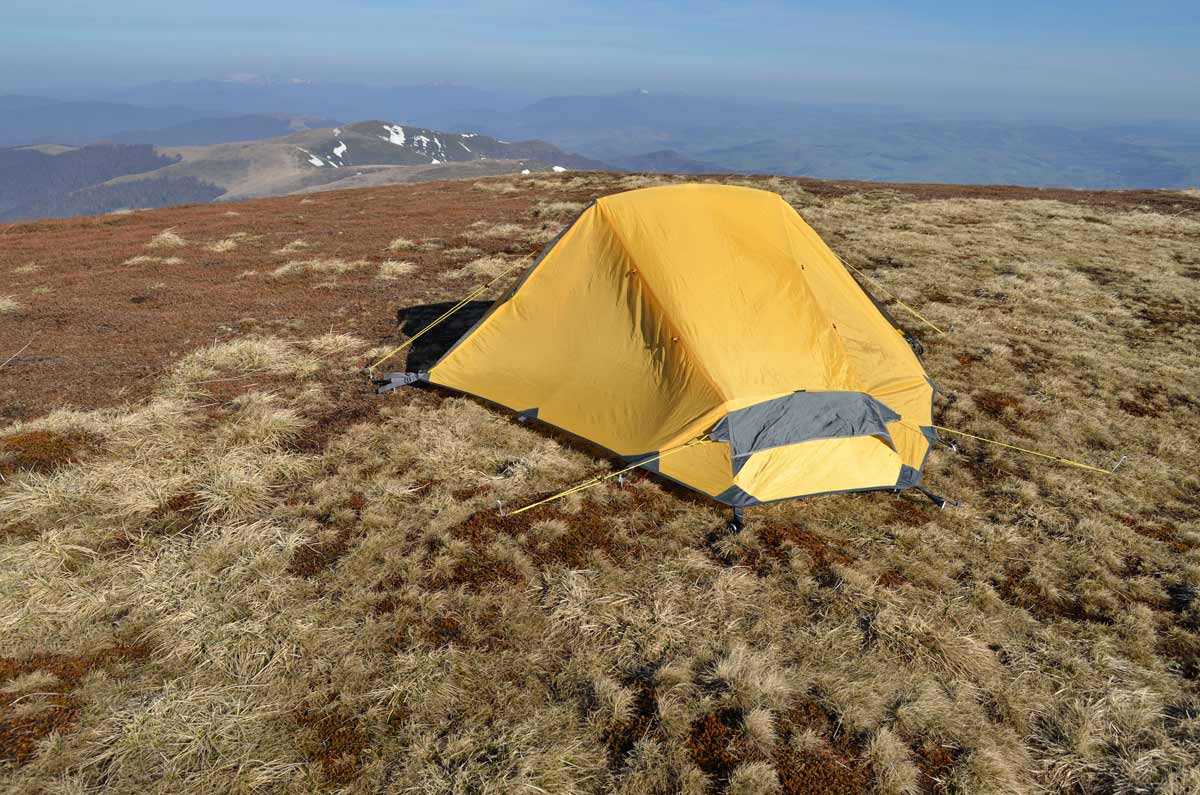Whether you’re a seasoned overnight hiker or just starting out, you’ve likely encountered guy ropes, those thin cords or ropes that attach to anchor points on your tent and secure it to the ground. While they may seem like unassuming pieces of equipment that more often than not, end up in the drawer at home, guy ropes play a crucial role in ensuring your tent’s stability, ventilation and comfort during your outdoor adventures.

Understanding the purpose of guy ropes
Guy ropes serve several essential purposes, making them indispensable for hiking tents:
1. Enhanced Stability: Guy ropes act as anchors, preventing your tent from being blown away by strong winds. They distribute the wind force evenly, transferring it from the tent’s fabric to the ground, keeping the tent upright and secure.
2. Improved Ventilation: Guy ropes help maintain proper tension on the tent’s rainfly, creating a gap between the rainfly and the inner tent. This gap allows for better air circulation, preventing condensation buildup and ensuring a comfortable sleeping environment.
3. Reduced Stress on Tent Poles: Guy ropes reduce the stress on the tent’s poles, particularly during windy conditions. By transferring some of the wind load to the ground, they prevent the poles from bending or breaking, maintaining the tent’s structural integrity.
4. Increased Livability: Proper guyline tension ensures that the tent’s shape is maintained, creating more habitable space inside. This is especially important in larger tents, where proper tension prevents sagging or drooping of the tent’s fabric.
5. Weather Protection: Guy ropes help keep the rainfly taut and away from the inner tent, preventing water from pooling or seeping through. This ensures that the inner tent remains dry and comfortable, even in heavy rain or snowfall.
6. Adaptability to Terrain: Guy ropes allow for flexibility in tent setup, enabling hikers to adapt to various terrain conditions. They can be adjusted to accommodate uneven ground, sloping surfaces, and rocky areas, ensuring a secure pitch.

Guy rope maintenance and usage tips
To ensure optimal performance and longevity of your guy ropes, follow these tips:
Regular Inspection: Inspect your guy ropes before each trip for signs of wear or damage. Replace any frayed or damaged cords promptly to maintain their effectiveness.
Proper Adjustment: Adjust the guy ropes to achieve the desired tension. Too loose ropes may not provide adequate support, while excessively tight ropes may put unnecessary stress on the tent or stakes.
Secure Anchoring: Use appropriate stakes or anchors that are suitable for the ground conditions. Secure the guy ropes firmly to prevent them from slipping or loosening.
Proper Storage: When packing up your tent, store the guy ropes neatly to prevent tangles or damage. Consider using a separate pouch or compartment for them.
Knowledge and Understanding: Familiarise yourself with the proper techniques for guying your tent. Different tents may have unique guying configurations, so refer to the manufacturer’s instructions or seek guidance from experienced hikers.

Guying your tent
While different tents may have unique guying configurations, here’s a general technique for guying your tent.
Preparation
- Assemble the tent: follow the manufacturer’s instructions to set up your tent according to the recommended pitch.
- Identify anchor points: Locate the designated anchor points on the tent, typically located at the corners, sides, and the center of the rainfly.
- Prepare stakes: Choose appropriate stakes or anchors depending on the terrain conditions. For firm soil, use lightweight metal stakes or plastic groundhogs. For soft ground, consider using heavier metal stakes or snow stakes for anchoring on snow.
- Choose suitable knots: Familiarise yourself with basic knots like the taut line hitch, which is an effective and adjustable knot for securing guy ropes.
Guying Process
- Attach guy ropes: Connect the guy ropes to the anchor points on the tent using the appropriate buckles, hooks, or loops.
- Lay out the guy ropes: Extend each guy rope in a straight line away from the tent, aiming for a slight angle, typically around 30-45 degrees. This angled configuration provides better stability and reduces stress on the tent poles.
- Choose anchoring points: Select suitable anchor points on the ground, preferably at least a foot away from the tent to prevent the fabric from rubbing against the stakes.
- Secure guy ropes to anchors: Drive the stakes firmly into the ground, ensuring they penetrate at least six inches. For snow, use snow stakes to anchor the guy ropes.
- Tighten guy ropes: Use the taut line hitch or a similar adjustable knot to secure the guy ropes to the stakes. Adjust the tension evenly to maintain a consistent tightness across all guy ropes.
- Check guy ropes: Inspect and adjust the tension of the guy ropes to ensure they provide adequate support and stability. Avoid overtightening, which can damage the tent or stakes.
- Repeat for all guy ropes: Follow the same process for all guy ropes around the tent, ensuring consistent tension and stability.
- Adjust for wind and terrain: Adjust the guy rope angles and tensions according to wind conditions and terrain variations. In windy areas, create more angle and tension to prevent the tent from flapping or being blown away.
Additional Tips
- Consider the tent’s design: Different tent designs may have specific guying configurations, so refer to the manufacturer’s instructions for the most optimal setup.
- Use hiking poles: If your tent has hiking pole loops, consider using them as additional anchors, especially in strong winds or uneven ground.
- Inspect frequently: Throughout your camping trip, regularly inspect the guy ropes for signs of wear, damage, or loosening. Tighten or replace them as needed.
- Store properly: After use, store the guy ropes neatly, avoiding tangles or knots that could hinder their effectiveness. Consider using a separate pouch or compartment for them.
- Practice before heading out: Familiarise yourself with the proper guying techniques and practice them in different conditions before embarking on your camping adventure.
Final thoughts
Guy ropes are often overlooked but essential components of hiking tents, playing a vital role in ensuring stability, ventilation, structural integrity, and overall comfort during your outdoor adventures. By understanding their purpose, practicing proper maintenance, and employing effective usage techniques, you can ensure that your guy ropes are always ready to support your tent and enhance your hiking experiences.






I rarely use mine unless it’s windy or wet. When do you use your guy ropes?
I rarely use mine but maybe I should. Will look into attaching them and using them going forward.